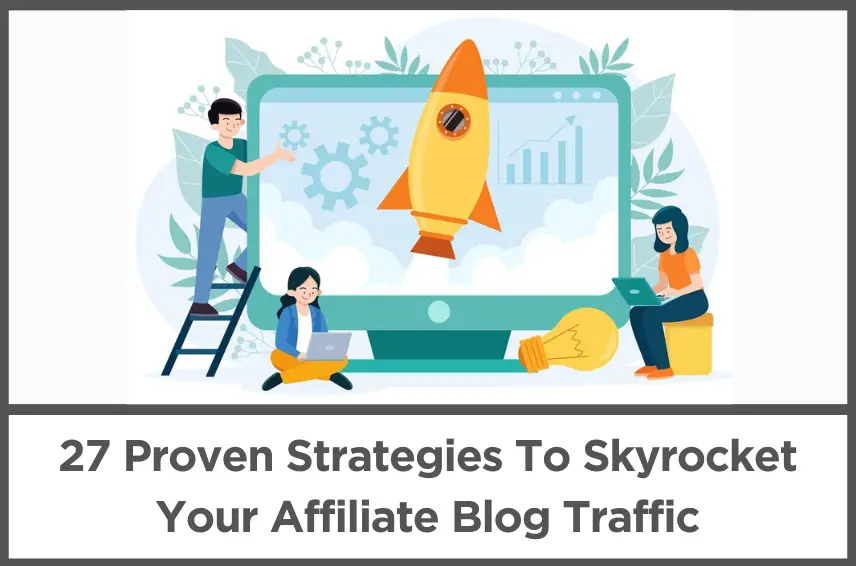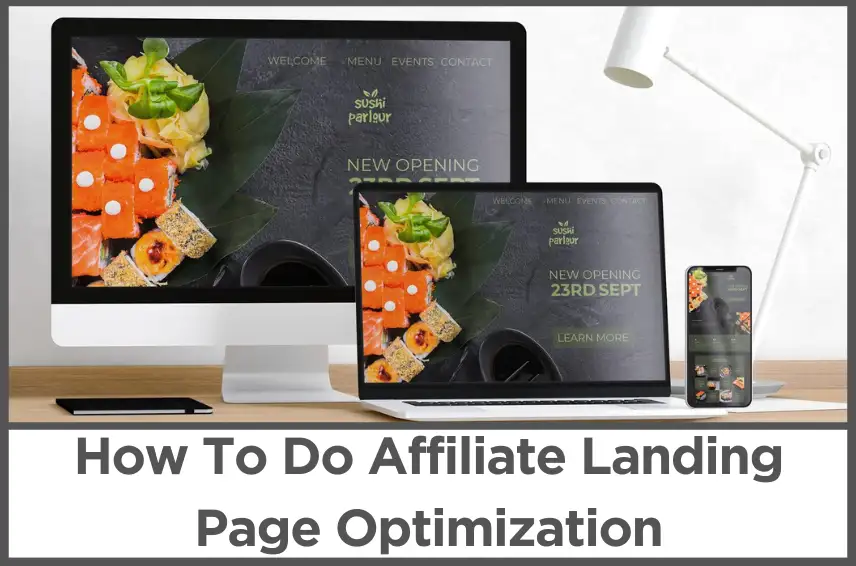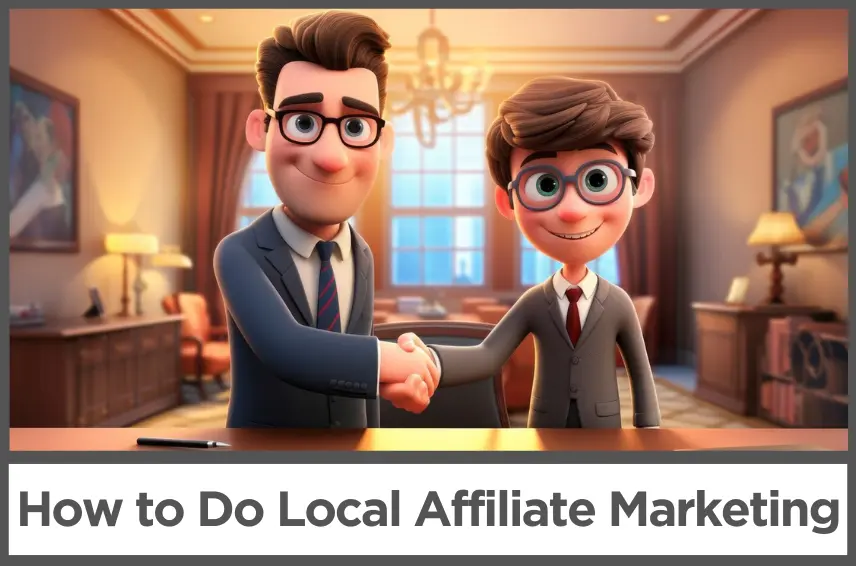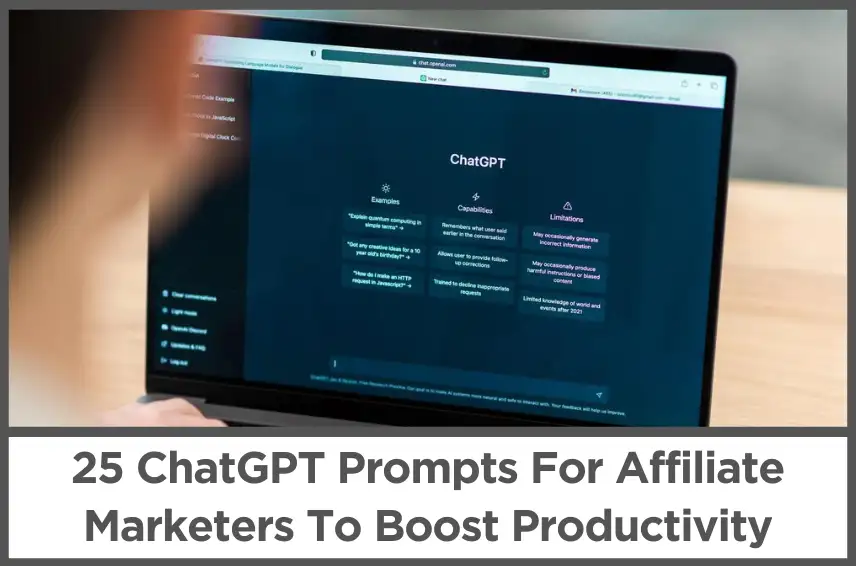27 Proven Strategies To Skyrocket Your Affiliate Blog Traffic
by Abhigyan
Have you ever found yourself staring at your blog analytics, eagerly awaiting the rush of visitors that never seems to materialize? You’re not alone.
Despite pouring your heart into crafting stellar content, those traffic numbers are still not showing any growth month after month.
But no need to worry. This is something most affiliate bloggers face initially as most of us don’t have a high marketing budget for paid promotion.
In this post, we’re diving headfirst into proven strategies that have worked consistently, and implementing only a few of these strategies will increase your affiliate blog traffic to new heights.
Before we embark on this journey, let’s dispel a common myth – more traffic, while enticing, isn’t the end game.
The real triumph lies in attracting the right kind of traffic – relevant, targeted, and genuinely interested in what your blog has to offer.
It’s about quality over quantity. And that’s precisely what our arsenal of tactics and strategies aims to deliver.
Understanding the purpose of your blog is very crucial. What do you want your visitors to do once they step onto your blog’s virtual doorstep?
By clarifying your goals, you pave the way for optimizations that can significantly boost conversions. Small tweaks wield immense power in the case of user engagement.
Although we’ve listed multiple ways to boost your affiliate blog traffic, you should resist the urge to juggle too many tactics simultaneously.
Instead, you should dedicate your efforts to mastering one strategy at a time. The reason is to see significant growth in traffic, you need to be consistent.
If you juggle multiple strategies at the same time without actually putting a serious effort, you might burn out quick and fell into despair that the method itself is at fault.
Are you ready to learn the strategies? Let’s begin!
Disclosure: Some of the links I share might be affiliate links. If you click on one and make a purchase, I may earn a small commission as a thank you. But don’t worry, it won’t cost you anything extra. I only recommend stuff I genuinely believe in. Your support helps me keep creating awesome content. You can read my full affiliate disclosure in my disclaimer page.
IN THIS POST :
Toggle1. Investigate "Queries" On Google Search Console

Go to your Google Search Console dashboard and switch to the ‘Performance’ tab. Here you’ll see a list of keywords that your blog is already ranking for.
Here, you’ll get an idea of what the users were actually searching for when they came across your affiliate blog.
Now consider creating articles including the keywords that are resulting in impressions.
You can either update existing content to have those keywords or choose to create a new article entirely for those keywords.
Furthermore, you can utilize tools like Ahrefs, ContentStudio, and SEMrush to gain insights into trending topics and keywords within your niche.
These tools not only reveal popular search queries but also provide a glimpse into your audience’s preferences.
You should also consider reading other blogs and forums within your niche to gauge the topics that resonate with your potential readers.
Engage in conversations, take note of discussions, and identify gaps in information. This proactive approach helps you align your content with the interests and needs of your audience.
Remember, relevance is key. Your goal is not just to drive traffic but to attract the right kind of traffic that converts into engaged followers and customers.
2. Target Long Tail Keywords With Low SEO Difficulty
Using tools like KWFinder, you can find low SEO difficulty keywords that do not require a lot of backlinks to rank on the first page of Google.
KWFinder also offers insights into your competitors’ keywords and helps you understand the search landscape.
To find these long tail keywords, you can enter the “queries” from your Google Search Console dashboard and use the appropriate filters to lower the SEO difficulty.
Google Trends is a valuable resource that can help you determine if your target keyword is trending or not.
It is better to avoid keywords that display a declining trend in recent years. By exploring trending topics, you can also tailor your content to capitalize on current interests.
ContentStudio is another powerful tool that aids in identifying topics with high social media engagement. This ensures that your content not only ranks well on search engines but also resonates across social platforms.
Analyze which keywords your competitors are targeting and evaluate their performance.
This information can guide your content strategy, allowing you to identify lucrative keyword opportunities and create content that outperforms existing competition.
Remember, the objective is not to merely generate traffic but to attract visitors genuinely interested in your affiliate offerings.
These tools will equip you with the data needed to make informed decisions, ensuring that your content aligns with both search engine algorithms and the preferences of your audience.
3. Include Both Evergreen And Trending Content

Once armed with insights from tools and a deep understanding of your audience, focus on strategic topic selection.
Opt for subjects that align with your overall content strategy and provide value to your target readers.
Consider the relevance of the topic to your affiliate products or services, ensuring a seamless integration that feels natural to your audience.
Explore evergreen topics that have consistent interest over time. These topics contribute to the long-term sustainability of your blog’s traffic.
However, don’t shy away from timely and trending subjects that can give your blog an immediate boost.
Striking a balance between evergreen and trending content ensures a diversified and engaging content calendar.
Moreover, experiment with the format of your content. Whether it’s how-to guides, product reviews, or industry insights, ensure each piece of content aligns with your overarching strategy and adds value to your readers’ experience.
4. Diversify Your Content Types
Diversifying your content types is a strategic move to capture and maintain your audience’s attention.
I’ve observed that list posts and infographics tend to receive more shares than other content types. As an affiliate blogger, incorporating these formats into your content strategy can significantly enhance your blog’s visibility and engagement.
List posts, offering information in a concise and organized manner, are inherently shareable. Readers appreciate the easy-to-digest format, making it more likely for them to share the content with their networks.
Infographics, on the other hand, provide a visually appealing way to convey complex information. Platforms like Canva and Figma make it accessible for bloggers to create stunning visuals that resonate with their audience.
When selecting content types, consider the preferences of your target audience.
Monitor the performance of different formats using analytics tools to identify which resonates best with your readers.
Experimentation is key so don’t be afraid to test various content types and analyze the results to refine your strategy continually.
5. Add Depth, Detail, Usability, Or Unique Angles To Your Content

Once you’ve selected a topic and content type, focus on what sets your content apart from the competition.
Ask yourself, “What unique angle, depth, or detail can I bring to this topic?” The goal is to offer content that is not only informative but also leaves a lasting impression on your readers.
Consider conducting in-depth research to provide your audience with comprehensive insights.
This could involve citing authoritative sources, incorporating case studies, or sharing personal experiences that relate to the topic.
Additionally, enhancing the usability of your content—making it easily scannable with clear headings, bullet points, and visuals—improves the overall reader experience.
Another effective strategy is to address your audience’s pain points directly.
Understand the challenges they face within your niche and tailor your content to offer practical solutions.
By consistently delivering value, you position yourself as a trusted resource, fostering long-term relationships with your readers.
6. Craft Compelling Headlines That Promise Value And Leave Unanswered Questions.
David Ogilvy’s timeless advice, “On average, five times as many people read the headlines as read the body copy,” holds true in today’s content-driven digital landscape.
Crafting compelling headlines is a critical skill that can significantly impact the success of your blog posts.
Your headline is not just a title, it’s a promise to your readers about the value they will gain from consuming your content.
When creating headlines, ensure they are clear, concise, and directly related to the content. Use language that resonates with your audience and sparks curiosity.
Consider incorporating power words that evoke emotion or urgency. However, it’s crucial to maintain authenticity—your headline should accurately represent the content of your post.
Furthermore, leave your audience with unanswered questions in your headlines.
This psychological tactic entices readers to click through and engage with your content to find the answers. The goal is to create a sense of intrigue that compels your audience to explore further.
While there are headline writing tools available, the most impactful element is your unique voice and understanding of your audience.
Continuously refine your headline-writing skills, test different approaches, and analyze the performance of your headlines to identify patterns that resonate with your readers.
7. Refresh And Optimize Old Content
Your blog’s archives house a wealth of valuable content, but as time passes, some of it may become outdated.
Recognizing the potential in revitalizing old content is key to maintaining a dynamic and relevant blog.
Start by conducting an audit of your existing posts, identifying those that could benefit from an update.
This could be content that once performed well but has seen a decline in search traffic or keywords ranking on the second page.
Dive into your analytics and identify posts that once garnered substantial search traffic but have experienced a decline over time.
Evaluate the post’s structure, readability, and relevance. Can you add more depth, provide additional resources, or improve the overall usability?
These considerations contribute to a revamped post that not only attracts new traffic but also encourages prolonged engagement.
When updating, decide whether to publish the revised content under the same URL or opt for a new one. If the post already ranks well on Google, maintaining the existing URL may preserve social share counts.
Once updated, promote the refreshed content across social media, search engines, and other blogs, maximizing its visibility and potential for renewed engagement.
Regularly monitoring and updating posts in this manner contributes to the overall health and relevance of your blog’s content library.
8. Make Your Content Visually Appealing

Visual content stands out in a crowded digital landscape, capturing the attention of your audience more effectively than text alone.
To make your content visually appealing, leverage user-friendly graphic design platforms like Figma and Canva.
Canva allows even those without design expertise to create stunning visuals for their blog posts. Incorporate visuals strategically within your content to break up text, illustrate concepts, and enhance the overall readability of your posts.
Remember, visual content extends beyond images. Consider embedding videos or creating multimedia presentations to diversify your content.
Visual appeal not only makes your blog more shareable on social media but also contributes to a positive user experience, keeping your audience engaged and coming back for more.
9. Link To Influential Posts
As an affiliate blogger, building relationships within your niche is pivotal for success. One effective way to do this is by linking to influential posts within your own content.
When you mention or reference another blogger’s work, it not only adds value to your content but also serves as a gesture of acknowledgment within the blogging community.
When selecting influential posts to link to, ensure they align with your own content and provide additional insights or perspectives.
This not only enriches your reader’s experience but also demonstrates a collaborative and community-driven approach to blogging. It’s essential to choose influencers whose content genuinely complements yours and adds value to your readership.
After including these links, take the extra step of notifying the influencers. Reach out via email or social media to inform them that you’ve referenced their work.
When reaching out, focus on the value your post adds to the influencer’s work.
Highlight how their insights or content contributed to your perspective and enriched the overall discussion in your blog. Be genuine and specific in your appreciation, as this increases the likelihood of a positive response.
While not every influencer may share your content, those who do can significantly impact your blog’s visibility.
Their endorsement not only introduces your blog to a wider audience but also adds credibility to your work.
Cultivating these relationships over time can lead to mutually beneficial partnerships and further establish your presence within the affiliate blogging community.
10. Interview Influential Bloggers

Introducing interviews into your content strategy adds a dynamic element that resonates with readers.
Choose influential bloggers within your niche and reach out to them for an interview. This not only provides your audience with diverse perspectives but also positions you as a curator of valuable insights.
When conducting the interview, delve into topics that are relevant to your audience’s interests. Ask insightful questions that unearth unique insights and actionable advice.
The goal is to extract valuable information that your readers can apply to their own affiliate endeavors. Once the interview is published, notify the blogger through email or social media, expressing gratitude for their contribution.
Influential bloggers often appreciate being featured and may share the interview with their followers, amplifying the reach of your blog.
Taking the interview concept to the next level, group interviews elevate your content by featuring insights from multiple influential bloggers.
The beauty of group interviews lies in the shared promotion effort. Each contributor becomes personally invested in the success of the post, leading to higher social media shares and increased visibility.
After publishing the group interview, notify each participant individually, expressing gratitude for their valuable contributions.
Encourage them to share the post with their audience, amplifying the impact of your content.
Group interviews not only enrich your blog but also foster relationships with multiple influencers simultaneously, creating a network that benefits your affiliate blogging journey.
11. Follow Industry Trends And Create Timely Content
Remaining current with industry trends positions your affiliate blog as a reliable source of up-to-date information.
Monitor industry publications, follow influential voices on social media, and subscribe to newsletters to stay informed about emerging trends.
Being aware of the latest developments allows you to create timely and relevant content that captures the attention of your audience.
One effective strategy is to anticipate trends before they reach their peak.
Identify topics or technologies on the verge of widespread adoption and position your content as a go-to resource.
This proactive approach not only attracts early adopters but also establishes your blog as a trendsetter within your niche. Timing is crucial, so strive to be among the first to cover and analyze emerging trends.
12. Be Among The First To Cover Emerging Topics
Large publications often spark conversations with their content, presenting opportunities for smaller blogs to contribute valuable insights or alternative perspectives.
Monitor influential publications in your niche, set up alerts for relevant keywords, and follow discussions on social media to identify trending topics.
Once you identify an emerging trend, act swiftly to create content that adds value to the ongoing conversation.
Whether it’s a blog post, video, or podcast, your goal is to be a go-to resource for those seeking information on the trending topic.
By positioning your blog as a timely and authoritative source, you increase the likelihood of attracting traffic from individuals actively seeking insights and opinions on the latest industry developments.
Remember, while speed is essential, maintaining quality and relevance in your content is equally crucial.
Strive to provide unique perspectives and actionable insights that set your affiliate blog apart in the crowded digital space.
13. Diversify Mediums For Existing Content
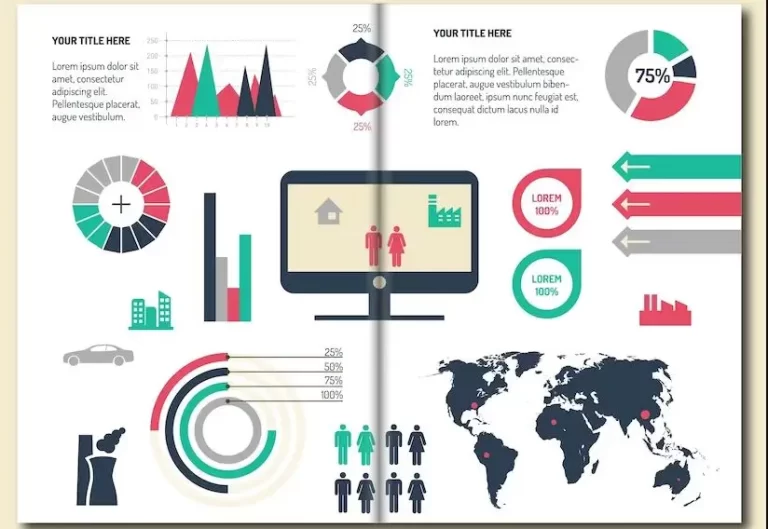
While written blog posts are essential, transforming your content into various formats ensures accessibility for different preferences.
One effective medium is the creation of infographics, which condense complex information into visually appealing graphics.
Additionally, consider venturing into the realm of podcasts. Many audiences prefer consuming content through audio, and podcasts provide an excellent opportunity to engage with this demographic.
By converting your blog posts into podcast episodes, you cater to individuals who prefer to consume information while on the go. This not only expands your audience but also enhances the overall accessibility of your affiliate content.
SlideShare presentations offer yet another avenue for content repurposing.
Transforming your blog content into visually engaging slides allows you to tap into the audience on SlideShare, a platform specifically designed for sharing presentations.
This strategy broadens your reach, as SlideShare presentations can be embedded in blog posts, shared on social media, and even included in email newsletters.
14. Optimize Your Affiliate Blog Design
The design of your affiliate blog plays a pivotal role in user experience and, consequently, in the success of your traffic-building efforts.
A cluttered or confusing layout can deter visitors, leading to high bounce rates. To optimize your blog’s design, focus on clarity and crispness.
Ensure that your blog theme is visually appealing, easy to navigate, and aligns with the overall branding of your affiliate business.
WordPress, a popular blogging platform, offers a plethora of themes catering to various styles and preferences.
While free themes are available, investing in a premium theme often brings added features and customization options. Choose a theme that not only reflects your brand identity but also provides a seamless reading experience for your audience.
Additionally, consider the placement of key elements such as social share buttons, subscription forms, and navigation menus.
These should be strategically positioned to enhance user engagement and encourage desired actions, such as sharing content or subscribing to your email list.
A well-optimized blog design not only attracts visitors but also encourages them to explore further, ultimately contributing to increased traffic and conversions.
15.Eliminate Unnecessary UI Elements
While it’s tempting to incorporate various elements into your blog, it’s essential to evaluate each one’s contribution to your overall goals.
Audit your blog for unnecessary distractions that may divert visitors’ attention from your primary content or affiliate offerings.
Common distractions include excessive banners, irrelevant widgets, or flashy graphics that do not contribute to the user experience.
Every element on your blog should have a purpose aligned with your affiliate marketing objectives.
For instance, if a particular blog directory badge or CPC ad isn’t performing well or doesn’t contribute to your goals, consider removing it.
The goal is to create a focused and purpose-driven user journey, where visitors are guided toward valuable content and, ultimately, your affiliate products or services.
By streamlining your blog and eliminating distractions, you create a more immersive and enjoyable experience for your audience.
This not only encourages longer on-site engagement but also increases the likelihood of conversions, whether it be through affiliate product clicks or other desired actions.
16. Improve Page Load Times
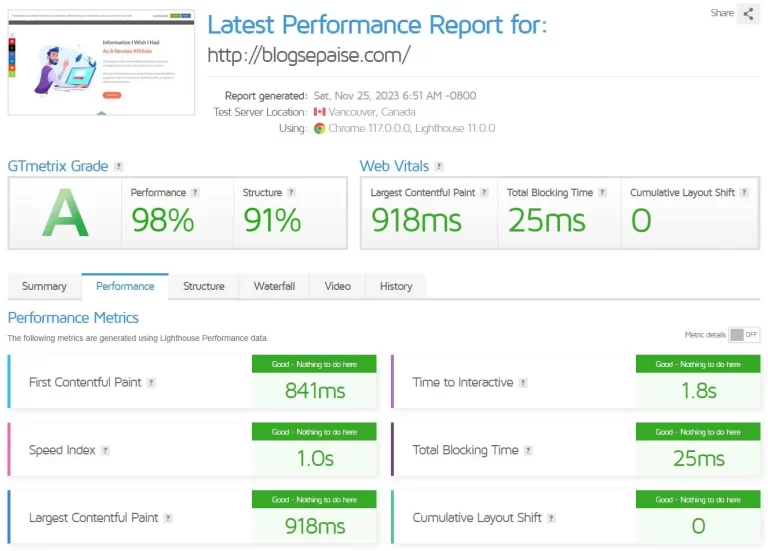
A slow-loading website not only frustrates visitors but can also lead to a significant drop in conversions.
Page load times are crucial for retaining your audience’s attention and ensuring a positive user experience.
Beyond user satisfaction, fast-loading pages also contribute to improved search engine rankings.
To enhance your blog’s loading time, consider utilizing tools such as Load Impact and Google’s PageSpeed Insights.
Load Impact allows you to simulate how your blog performs under various traffic conditions, highlighting potential bottlenecks. PageSpeed Insights, on the other hand, provides actionable suggestions to optimize your blog’s performance.
Explore caching plugins for platforms like WordPress, as they can significantly improve loading times by storing static versions of your content.
Compressing images and utilizing a content delivery network (CDN) are additional strategies to expedite page loading.
By investing in optimizing your blog’s loading time, you not only cater to user expectations but also set the stage for higher conversions and better visibility in search engine results.
17. Add Social Share Widgets Within Your Content
Visual content holds immense power in capturing attention and driving engagement.
Whether it’s infographics, images, or videos, making your visual content shareable amplifies its impact.
A tool like Social Snap can be invaluable in this regard, allowing you to integrate Pinterest share buttons seamlessly into your visual content. Given Pinterest’s visual-centric user base, this can significantly enhance the virality of your content.
Ensure that your visuals are not only compelling but also optimized for sharing on various platforms. Use alternative text and captions strategically to enhance accessibility and encourage sharing.
Implementing “Click to Tweet” widgets within your content encourages readers to share specific quotes or insights directly from your blog. This tactic not only boosts social shares but also helps disseminate key messages from your content, increasing its impact.
WordPress users can easily set up “Click to Tweet” widgets using plugins like Better Click To Tweet or Social Snap.
Craft tweetable quotes that encapsulate the essence of your content or highlight key takeaways.
These widgets serve as interactive elements, prompting readers to share snippets of your content with their followers, thereby broadening your content’s social footprint.
Consider the nature of your content and your target demographic. If your affiliate blog caters to business professionals, incorporating a LinkedIn share button may be more impactful than others.
18. Grow Your Email List
Building and growing your email list should be a primary focus in your traffic generation strategy.
Make it easy for your readers to subscribe by incorporating clear and strategically placed opt-in forms on your blog. Offer a compelling reason for them to join, whether it’s exclusive content, discounts, or valuable resources.
Consider employing lead magnets to incentivize sign-ups. Create downloadable resources such as e-books, cheat sheets, or exclusive guides that align with your blog’s niche.
These incentives not only attract new subscribers but also position you as an authority in your field. Implementing an exit-intent pop-up can be a subtle yet effective way to capture visitors who are about to leave your site without subscribing.
Remember, your email list is a direct channel to communicate with your audience.
Craft engaging and personalized newsletters that not only highlight your latest blog posts but also provide additional value.
While it’s tempting to include multiple calls-to-action in your emails, focusing on a single goal per email can significantly increase engagement.
Craft compelling subject lines that grab attention and clearly communicate the email’s purpose. Use persuasive language in the email body to encourage readers to take the desired action.
Whether it’s clicking a link, making a purchase, or sharing your content, a single-focused email increases the likelihood of your audience completing the intended action.
Experiment with different email formats, such as newsletters, product spotlights, or curated content emails. Pay attention to analytics to gauge the effectiveness of each email type and optimize your strategy accordingly.
Building a strong email list ensures that your most loyal followers are consistently informed and engaged, driving traffic back to your blog with each communication.
19. Implement Autoresponder For Evergreen Content

Evergreen content forms the backbone of a successful affiliate blog, providing enduring value to your audience.
Utilize autoresponders to ensure that new subscribers are introduced to your best-evergreen content over time.
Design a series of automated emails that drip-feed this content, allowing your audience to discover and engage with timeless pieces that continue to be relevant.
Craft a compelling welcome email that sets expectations and communicates the value subscribers will receive.
Segment your evergreen content based on categories or themes, creating a personalized journey for different subscriber interests.
Use strategic timing for autoresponder emails to maintain consistent engagement without overwhelming your subscribers.
Additionally, periodically review and update your autoresponder series to include new evergreen content and exclude outdated information. This ensures that even long-term subscribers continue to receive valuable and up-to-date content.
The autoresponder becomes a dynamic tool for introducing new audience members to your blog’s best-performing content, fostering a deeper connection and encouraging sustained traffic.
20. Avoid Risky Link Building Tactics
It is crucial to approach link building with a focus on quality rather than quantity.
Resist the temptation to engage in risky or black-hat link building tactics, as the consequences can be detrimental to your blog’s long-term success.
Instead, prioritize acquiring natural and authoritative backlinks. Google’s algorithms are becoming increasingly sophisticated at detecting manipulative link-building practices.
Unnatural link schemes, link farms, and purchased links can lead to penalties, causing your blog to plummet in search rankings.
Embrace ethical and white-hat link-building strategies that involve creating valuable, shareable content that naturally attracts links from reputable sources.
Engage in genuine outreach to influencers and other bloggers in your niche.
Building relationships can lead to organic link-building opportunities as others recognize the value of your content.
Remember, the goal is not just to accumulate links but to establish your blog as a trusted and authoritative resource within your industry.
21. Be Active On Social Media
Social media is a powerhouse for affiliate bloggers seeking to amplify their reach and drive targeted traffic.
Building a strong social media presence goes beyond simply sharing your blog posts; it involves active engagement with your audience and peers within your niche.
Platforms like Reddit, Quora, Facebook, Twitter, TikTok, and Instagram can serve as dynamic channels for promoting your content and fostering meaningful connections.
Create a social media strategy that aligns with your content calendar. Regularly share not only your blog posts but also curated content relevant to your niche.
Actively participate in conversations, respond to comments, and ask questions to encourage engagement. Utilize visual content, such as images and videos, to enhance sharing of your posts.
Consistency is key on social media. Develop a posting schedule that reflects the optimal times for engagement within your audience. Leverage hashtags strategically to increase the discoverability of your content.
Additionally, explore paid advertising options on platforms like Facebook and Instagram to target specific demographics and expand your blog’s visibility.
22. Publish On LinkedIn's Pulse
LinkedIn, often recognized for professional networking, offers a powerful publishing platform known as Pulse.
As an affiliate blogger, tapping into LinkedIn’s audience can provide a unique avenue for reaching business-oriented individuals interested in your niche.
Publishing articles directly on LinkedIn allows you to showcase your expertise and drive traffic directly from the platform.
Craft content tailored to a professional audience. Share insights, case studies, and industry trends that resonate with LinkedIn’s user base.
Leverage your affiliate expertise to provide valuable information that positions you as an authority in your field. Remember, LinkedIn users appreciate content that offers actionable insights and helps them stay informed about industry developments.
Take advantage of LinkedIn’s features, such as adding multimedia elements to your posts. Promote your LinkedIn articles across your other social media channels to maximize visibility.
By establishing a presence on LinkedIn’s Pulse, you open up opportunities for networking, collaboration, and driving traffic from a platform with a distinct professional focus.
23. Contribute Guest Posts To Build Authority
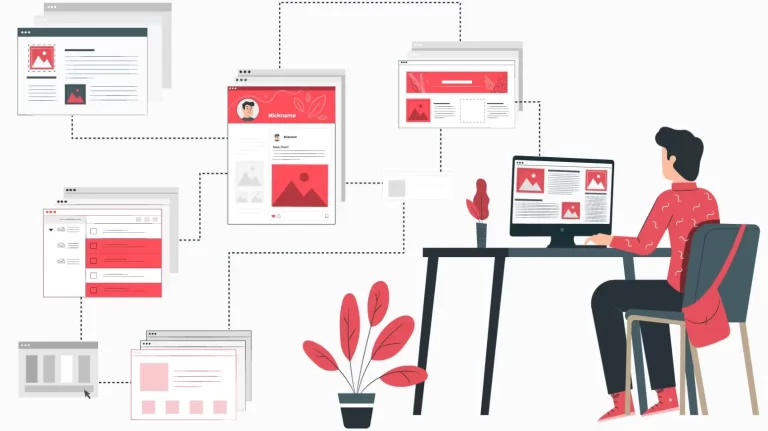
Guest posting is not just about securing backlinks, it’s a strategic approach to building your authority within your niche and establishing valuable relationships with fellow bloggers.
Start by identifying blogs within your niche that align with your expertise and target audience.
Look beyond the sheer metrics like Domain Authority, focus on blogs with an engaged audience, evidenced by real comments and social shares.
Leverage your existing contacts within the industry to identify suitable blogs for collaboration. Building relationships with fellow bloggers can open doors to guest posting opportunities that go beyond mere content distribution.
When reaching out to potential blogs for guest posting, it’s crucial to connect with them first. Engage via social media, leave insightful comments on their posts, and genuinely show interest in their content.
Once a rapport is established, pitch your guest post idea in a way that emphasizes the mutual benefit. Highlight how your contribution adds value to their audience and contributes to the overall growth of their blog.
Moreover, when crafting your guest post, ensure it aligns seamlessly with the tone and style of the host blog. Your goal is not just to showcase your expertise but to become an integral part of the host blog’s community.
As you contribute high-quality content consistently, you not only enhance your blog’s authority through backlinks but also strengthen your position as a respected figure within your niche.
24. Use Paid Promotion Platforms Like Outbrain
While organic traffic is crucial, incorporating paid promotion strategies can accelerate your blog’s growth.
Outbrain, a content discovery platform, provides an avenue to showcase your content below articles on top-tier media publications. This exposure can introduce your blog to a broader audience and drive quality, targeted traffic.
To effectively use Outbrain, start by selecting high-performing and engaging content from your blog. The content you promote should be aligned with the interests of the wider audience you aim to reach.
Craft compelling headlines and thumbnail images that grab attention and entice clicks. Remember, the key is not just to drive traffic but to attract users genuinely interested in your content and offerings.
Allocate a budget for Outbrain promotion, and monitor the performance of your campaigns closely.
Utilize the platform’s analytics to understand which pieces of content resonate the most with the new audience. This data can inform your future content strategy and guide your decisions on where to allocate promotional budgets for optimal results.
While organic growth is foundational, platforms like Outbrain offer a valuable supplementary strategy to ensure your blog gets noticed by a wider and potentially receptive audience.
25. Create Free Tools That Solve Real Problems
One powerful tactic to not only drive traffic but also establish your blog as an authoritative resource is to create free tools that cater to the needs of your audience.
Identify common problems or challenges faced by your target audience within your niche and develop tools that provide practical solutions.
For example, if you’re in the affiliate marketing space, consider creating a tool that helps users generate effective affiliate links or analyze the performance of their affiliate campaigns.
The key is to offer something genuinely valuable that aligns with your blog’s theme and audience’s interests.
The success of this approach lies in the tool’s functionality and user-friendliness. Ensure that your tool is easy to use and delivers tangible benefits.
Promote your free tool on your blog, social media channels, and relevant online communities. Encourage users to share their experiences and feedback, fostering a sense of community around your tool.
Creating free tools attracts immediate traffic interested in the tool and contributes to long-term traffic as users continue to discover and share your valuable resource.
Additionally, these tools can enhance your blog’s reputation as an industry authority, further solidifying your position within your niche.
26. Be A Source For Journalists

Harvesting opportunities from platforms like Help A Reporter Out (HARO) positions you as an industry expert and opens avenues for increased visibility.
Journalists actively seek knowledgeable sources to enrich their stories, and as an affiliate blogger, your insights can be invaluable. Signing up for a free account on HARO connects you with journalists looking for expert opinions in your niche.
Regularly check your HARO emails for relevant opportunities, and when you spot a query that aligns with your expertise, craft a succinct and compelling pitch.
Highlight why your perspective adds value to the journalist’s story and be ready to provide insightful responses promptly.
Establishing yourself as a go-to source for journalists not only boosts your credibility but can also lead to media features, expanding your blog’s reach to new audiences.
Being responsive and offering genuine expertise builds lasting relationships with journalists. This will aid in immediate traffic spikes and contribute to long-term brand recognition and authority within your industry.
27. Focus On Your Top Traffic Sources
Platforms like Google Analytics offer a wealth of data that can unveil crucial insights into the performance of your content and traffic sources.
Start by exploring the “Acquisition” tab and specifically the “Channels” section. This breakdown allows you to identify the channels driving the most traffic to your blog.
Understanding your top traffic sources enables you to prioritize efforts where they matter most. Whether it’s organic search, social media, direct traffic, or referrals, each channel requires a tailored approach.
If a substantial portion of your traffic comes from social media, consider doubling down on platforms that resonate most with your audience. If organic search is a significant driver, focus on optimizing your content for relevant keywords.
By analyzing analytics, you can refine your content strategy and gain valuable insights into user behavior. Discover which pages are the most visited, the average time users spend on your site, and the bounce rates.
This granular understanding empowers you to optimize your blog for a better user experience and tailor your content to what your audience finds most compelling.
Final Thoughts On Increasing Affiliate Blog Traffic
Alright, you’ve got a bunch of ways to boost your blog traffic now. But, here’s the key: choose the ones that really match your blog and bring in the right visitors.
Oh, if you haven’t set up an analytics tool, do it now. Don’t just trust what your web host says, get something like Google Analytics – it’s like your blog’s personal detective.
You might want to try multiple strategies simultaneously but trust me, it’s smarter to focus on just one at a time.
Now, go ahead, take action, and get your blog traffic moving!
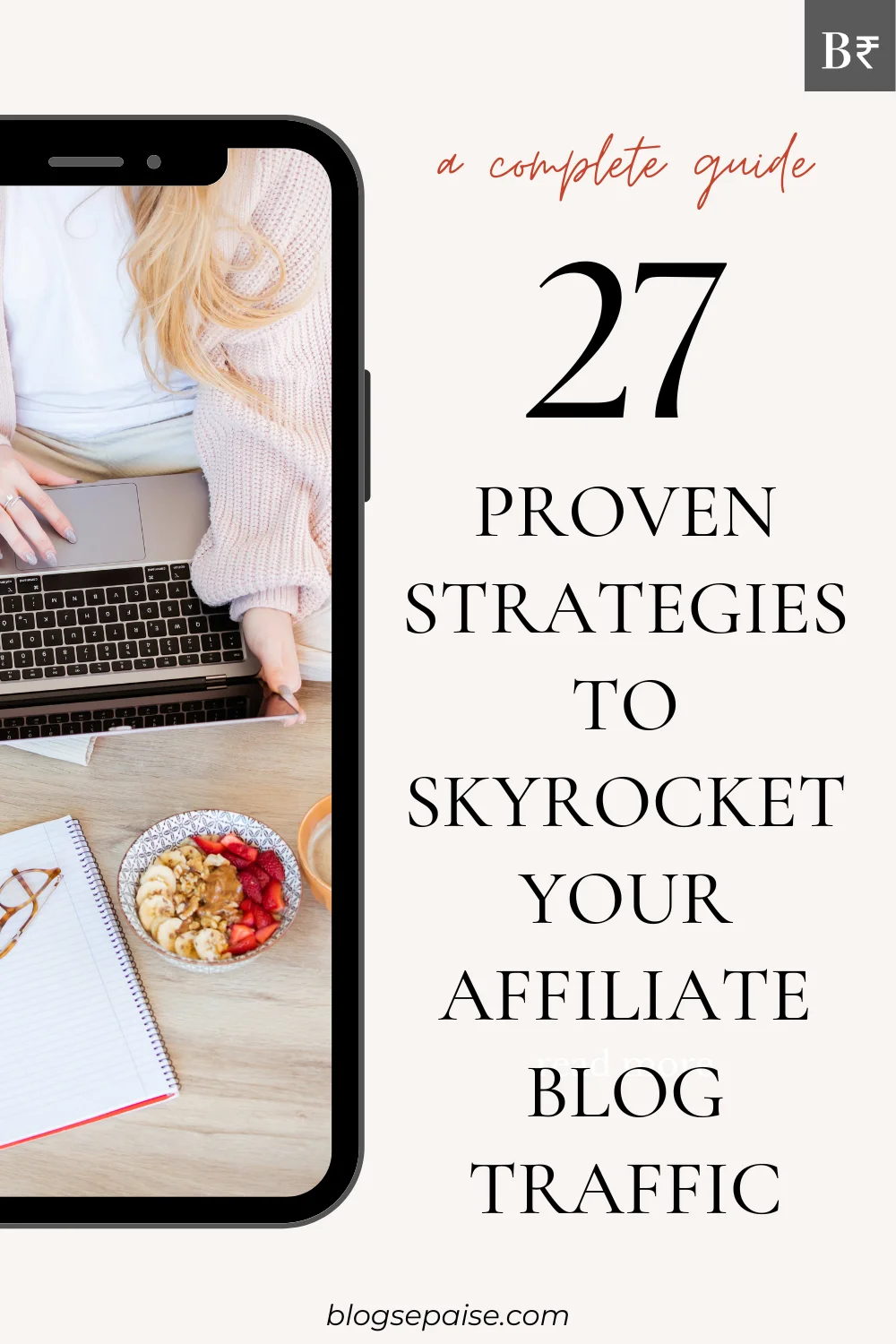
If you find this article helpful, kindly share it with your friends. You may also Pin the above image on your Pinterest account. Thanks!
Abhigyan Mahanta
Hi! I’m Abhigyan, a passionate remote web developer and writer with a love for all things digital. My journey as a remote worker has led me to explore the dynamic landscape of remote companies. Through my writing, I share insights and tips on how remote teams can thrive and stay connected, drawing from my own experiences and industry best practices. Additionally, I’m a dedicated advocate for those venturing into the world of affiliate marketing. I specialize in creating beginner-friendly guides and helping newbie affiliates navigate this exciting online realm.

